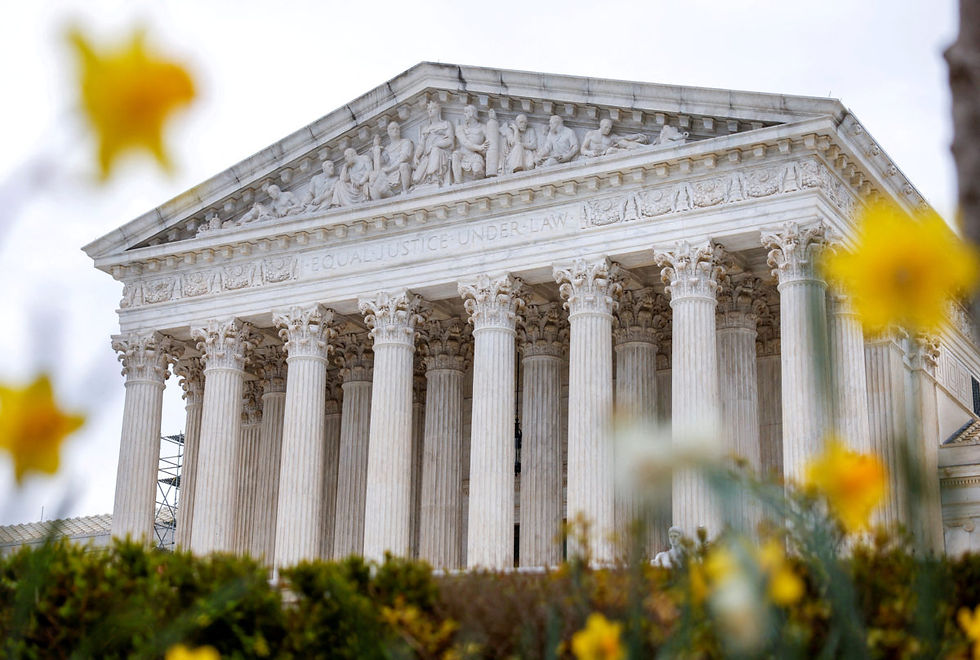Supreme Court Case Analyses and Commentary
- Mathew Habib
- Jul 29
- 3 min read
The Supreme Court of the United States plays a crucial role in shaping the laws and rights that govern our society. Each case it hears can have far-reaching implications, affecting everything from individual freedoms to government powers. In this blog post, we will explore several landmark Supreme Court cases, providing analyses and commentary on their significance and impact.
Understanding these cases is essential for anyone interested in law, politics, or civil rights. They reveal how the judiciary interprets the Constitution and how those interpretations can change over time.
The Role of the Supreme Court
The Supreme Court is the highest court in the United States. It has the final say on legal disputes and interprets the Constitution. Its decisions can overturn laws and set precedents that lower courts must follow.
The Court hears cases that involve significant legal questions, often related to civil rights, federal authority, and individual liberties.
Key Functions of the Supreme Court
Judicial Review: The power to invalidate laws that conflict with the Constitution.
Interpreting Laws: Clarifying the meaning of laws and how they apply in specific cases.
Setting Precedents: Establishing legal principles that guide future cases.
Landmark Cases
Brown v. Board of Education (1954)
One of the most significant cases in American history, Brown v. Board of Education, addressed racial segregation in public schools. The Court ruled that "separate but equal" educational facilities were inherently unequal, thus unconstitutional.
This decision was a pivotal moment in the Civil Rights Movement. It laid the groundwork for desegregation and challenged the status quo of racial discrimination.
Roe v. Wade (1973)
Roe v. Wade is another landmark case that has had a profound impact on American society. The Supreme Court ruled that a woman has the right to choose to have an abortion under the right to privacy.
This decision sparked ongoing debates about women's rights and reproductive health. It highlighted the tension between individual freedoms and state interests.
Obergefell v. Hodges (2015)
In Obergefell v. Hodges, the Supreme Court ruled that same-sex marriage is a constitutional right. This case marked a significant victory for LGBTQ+ rights and equality.
The Court's decision affirmed that marriage is a fundamental right, regardless of sexual orientation. It represented a shift in societal attitudes toward same-sex relationships.
Analyzing the Impact of Supreme Court Decisions
The decisions made by the Supreme Court do not exist in a vacuum. They reflect and influence societal values and norms.
Social Change
Supreme Court rulings can catalyze social change. For example, the Brown v. Board of Education decision not only desegregated schools but also inspired further civil rights activism.
Similarly, Obergefell v. Hodges contributed to a broader acceptance of LGBTQ+ rights in society.
Political Ramifications
Supreme Court decisions can also have political consequences. They can shift the balance of power between state and federal governments.
For instance, Roe v. Wade has led to numerous state-level laws attempting to restrict abortion access, creating a patchwork of rights across the country.
The Future of the Supreme Court
As society evolves, so too will the issues that come before the Supreme Court.
Emerging Issues
Several emerging issues may soon be addressed by the Court, including:
Technology and Privacy: As technology advances, questions about privacy rights and data protection will become increasingly relevant.
Voting Rights: Ongoing debates about voter ID laws and gerrymandering will likely lead to new cases.
Environmental Regulations: Climate change and environmental protection laws are becoming critical issues for the Court to address.
The Role of Public Opinion
Public opinion can influence the Supreme Court, although the justices are not directly elected. They often consider societal values when making decisions.
As public attitudes shift, the Court may be more inclined to rule in favor of progressive changes.
Conclusion: The Ever-Evolving Landscape of Justice
The Supreme Court is a dynamic institution that reflects the changing values of society. Its decisions shape the legal landscape and influence the lives of millions.
By understanding landmark cases and their implications, we can better appreciate the role of the judiciary in protecting our rights and freedoms.
As we look to the future, it is essential to remain engaged with the issues that come before the Court. The decisions made today will undoubtedly impact generations to come.






Comments